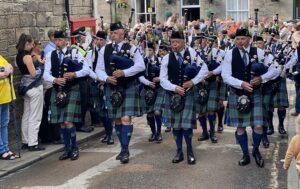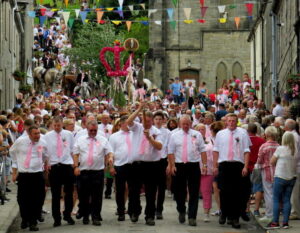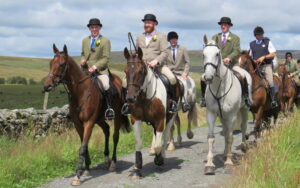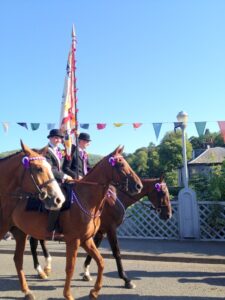The first marking of the boundaries happened in 1759 with a man known as ‘Bauldy Beattie’ walking around the land boundaries. Later people started to ride around the boundaries on horseback and this became known as the Langholm Common Riding.
Langholm Common Riding continues today and some of the common land is now in community ownership and is part of the Tarras Valley Nature Reserve. The Common Riding now takes place on the last Friday of July and brings crowds of thousands of people to witness the hundreds of people riding around the boundaries or marches of the common land.
During the Common Riding the ‘fair’ is ‘cried’ twice by a man standing on the back of a horse. This is a stirring moment for the Langholm people. The Common Riding is full of traditions but demonstrates the strength of feeling the people have for the land that surrounds the town of Langholm.
People have also used the Tarras Valley for recreation for generations including picnics, swimming and games with families enjoying nature and fun out of doors. This continues to this day.
The people of Langholm have also used the Tarras Valley for recreation for generations including picnics, swimming and games with families enjoying nature and fun out of doors. This continues to this day.



